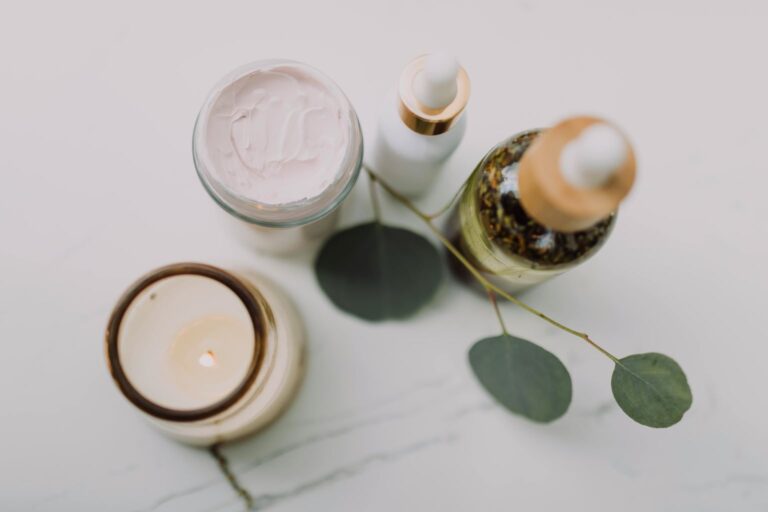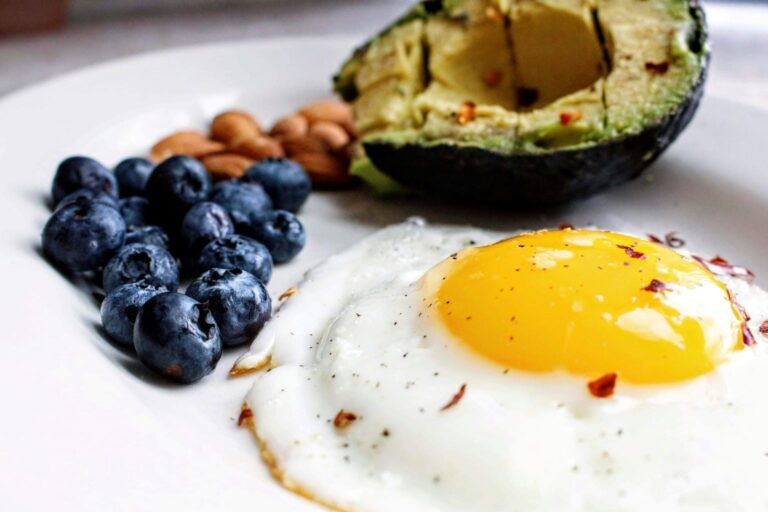Ever confidently layered your skincare, only to wake up with skin that looked like it had a mild existential crisis? I realized the same after a particularly ambitious night of mixing creams! Turns out, there are some skincare ingredients not to mix, no matter how shiny and promising the product label looks.
In this guide, I’ll walk you through which ingredients to avoid when using powerhouses like Vitamin C, salicylic acid, glycolic acid, and even our hydrating bestie—hyaluronic acid. From adding HA to your moisturizer the wrong way to attempting to mix serums with lotions like a potion-making wizard—trust me, some things are just best avoided!
According to studies, moisturizers, cleansers, and sunscreens are the most commonly used skin care products. But now it’s time to go beyond that! So grab your toner (but maybe don’t mix it with your retinol just yet), and let’s decode the unspoken rules of ingredient pairing.
What Not To Mix With Vitamin C
Vitamin C is a very powerful antioxidant that not only brightens your skin but also gives collagen-boosting benefits. However, it doesn’t always play well with many active ingredients. I once layered a Vitamin C serum with strong retinol before sleeping.
Guess what? I woke up with irritated and flaky skin! To not make a similar mistake, here are the top skincare ingredients not to mix with Vitamin C, and why…
- Retinol: Since both are potent actives, pairing Vitamin C and retinol (Vitamin A) can become too intense, especially for dry and sensitive skin. It can lead to peeling, redness, or burning sensations
- AHAs/BHAs: Alpha Hydroxy Acids (like glycolic or lactic acid) and Beta Hydroxy Acids (like salicylic acid) exfoliate the skin. Pairing them with acidic Vitamin C can overwhelm your skin barrier
- High-dose Niacinamide: According to older studies, when you mix Vitamin C with niacinamide, it leads to skin redness/irritation. But this only happens under extreme heat. Now, many facial products use stabilized ingredients and combine them effectively. Still, issues can arise with very high concentrations or unstable DIY mixtures
Just because ingredients are powerful on their own doesn’t mean they work well together. Some skincare ingredient combinations can stress out your skin instead of helping it. So, here’s a better approach for you:
- Use Vitamin C in the morning (for antioxidant protection) and retinol at night (for cell turnover and repair)
- If you’re using a mild acid toner, wait 15–30 minutes before applying Vitamin C to reduce conflict
- If irritation occurs, separate usage—Vitamin C in the morning, niacinamide at night. Or opt for products specifically formulated to include both
What Not To Mix With Salicylic Acid
Ah, Salicylic acid, your oily skin savior! This BHA (Beta Hydroxy Acid) is famous for deep cleaning pores and clearing acne. But this active ingredient is also a bit temperamental, just like a diva.
While it works wonders on breakouts and blackheads, pairing it with the wrong ingredients can irritate your skin more than help it. These harsh skincare combinations can cause more harm than good. Here are ingredients to avoid when using salicylic acid:
- Retinol: Both retinol and salicylic acid cannot be used together because both are strong exfoliants. They each increase cell turnover, so when used together, they can overwhelm your skin barrier
- Glycolic Acid or other AHAs: AHAs like glycolic, lactic, or mandelic acid exfoliate the skin’s surface, while salicylic acid works deeper in the pores. Mixing them sounds like a power move for your skincare routine, but ends up causing dry patches/inflammation
Even in Korean skincare routines, which are known for layering multiple steps, actives like salicylic acid are typically balanced with calming ingredients to avoid over-exfoliation. It’s all about strategy. Try following this one:
- Use a salicylic acid cleanser or toner (followed by sunscreen!) in the day and retinol or glycolic acid (but not both on the same night) before sleeping
- Don’t use all three at once. Instead, create a rotation that gives your skin time to recover
RELATED READING: Is Snail Mucin The Next Big Thing In Skincare? Let’s Find Out
What Not To Mix With Hyaluronic Acid
Hydraulic acid is often called the “Switzerland” of skincare. It’s neutral, non-reactive, and universally well-tolerated. You can easily experiment with it while layering serums. Even though it’s extremely versatile, there is one common mistake people make when mixing skincare products. So, here’s what not to pair with hydraulic acid:
- Heavy Occlusive Products: It’s a disaster to put hydraulic acid on bone-dry skin and then seal it with petroleum waxes or thick balms. It may actually trap zero hydration or worse, pull moisture from deeper layers of your skin, causing dryness or tightness.
Hyaluronic acid (HA) works like a moisture magnet—it pulls water from wherever it can find it. To make the most of HA without backfiring, it’s important to apply it correctly and pair it wisely with the right products. So, keep in mind the following:
- Adding HA to your moisturizer is smart, only if the skin is slightly damp
- Look for formulations with a low molecular weight HA for longer-lasting hydration
- HA is compatible with actives like retinol, Vitamin C, niacinamide, and peptides. But remember: its effectiveness depends on when and how you layer it
What Not To Mix With AHA/BHA
Glycolic acid (an AHA) and salicylic acid (a BHA) are powerful chemical exfoliants known for their ability to resurface dull skin, unclog pores, and improve texture. However, when it comes to skincare products you shouldn’t mix, AHAs and BHAs top the caution list.
They’re the “reset button” for rough, breakout-prone skin, but only when used with care.
I remember getting overly excited with my exfoliating toner and adding a retinol serum right after… big mistake! My skin felt tight, raw, and unhappy for days.
Used incorrectly, they can cause adverse reactions like disruption of the skin barrier or inflammation. So, below are some ingredients to avoid when using AHA/BHA:
- Other strong acids: Layering too many acids ( Lactic Acid, Mandelic Acid, Azelaic Acid) can increase the risk of over-exfoliation and lead to flaking, stinging, and redness
- Retinol: Both retinol and AHAs/BHAs accelerate cell turnover, which can be overwhelming when combined
- Unstable Vitamin C: L-ascorbic acid (a potent form of Vitamin C) functions best at a low pH (around 2–3), which is also acidic, but combining it with AHA/BHA can further lower pH and trigger sensitivity
If you’re trying to get the best of multiple active ingredients without damaging your skin, here’s a smarter approach:
- Use AHA/BHA one night, retinol the next, and Vitamin C in the morning.
- Choose multi-tasking products that include buffered combinations of actives, pre-balanced by chemists.
- Always follow acids with barrier-supporting ingredients like ceramides, hyaluronic acid, or niacinamide (unless sensitivity occurs).
What Not To Mix With Glycolic Acid
Glycolic acid is the most potent among AHAs, and due to its small molecular size, it penetrates deeply into the skin. It has helped my mom immensely, especially with smooth texture and fading pigmentation. Wondering what skincare products should not be mixed with glycolic acid? Here’s your answer:
- Retinol: Using them together can lead to excessive cell turnover and is a recipe for a damaged moisture barrier
- Vitamin C (L-ascorbic acid): Since both are pH-sensitive, layering them can lower the skin’s pH to the point of irritation, causing stinging
- Benzoyl Peroxide or Salicylic Acid (BHA): This can excessively dry out and irritate acne-prone skin. It can also cause product instability when mixed directly on the skin
I’ve learned (the hard way) that piling on actives after glycolic acid is like putting hot sauce on an open wound—just because you can, doesn’t mean you should. So, here’s a smarter routine for you:
- Use glycolic acid 2–3 times a week, especially if you’re new to acids.
- Research says that GA is better when used with gel cream/cream. So, layer it with soothing serums like niacinamide, panthenol, or hyaluronic acid.
- Acids increase your skin’s sensitivity to sunlight, so daily sun protection is non-negotiable.
If you’re still confused, don’t worry, we’ve got you! Between TikTok routines, glowing influencer recommendations, and that one friend who swears by her 10-step ritual, skincare can feel like a full-time job. It’s hard enough remembering to drink enough water, let alone remembering which acid not to mix with what!
That’s exactly why we made this handy reference. Whether you’re standing in your bathroom with five open serums or scrolling through your cart on a skincare sale, keep this cheat sheet in your Notes app or screenshot it for quick decisions. Trust us, your skin will thank you later!
RELATED READING: Rare Beauty Vs Rhode: Which Celebrity Beauty Brand Is More Sustainable
Skincare Ingredients Cheat Sheet
| Key Ingredient | Do Not Mix With | Why It’s Bad |
| Vitamin C | Retinol, AHAs/BHAs, High-dose Niacinamide | pH clash, sensitivity, oxidation |
| Niacinamide | Strong Acids (AHAs/BHAs), Unstable Vitamin C | Irritation, flushing, reduced effectiveness |
| Salicylic Acid (BHA) | Retinol, Glycolic Acid | Over-exfoliation, barrier damage |
| Glycolic Acid (AHA) | Retinol, BHA, Niacinamide | Too harsh, strips skin, inflammation |
| Retinol | AHAs/BHAs, Strong Vitamin C | Redness, peeling, dryness |
| Hyaluronic Acid | Very heavy occlusives (if skin is dry) | Can trap no moisture; counterproductive hydration |
| Ceramides | — | Safe with all; great for repairing the barrier |
Pairing Tips (What You Should Mix)
Now that we’ve talked about what not to mix, let’s flip the script! Some ingredients actually work better together, like a dream team for your skin. Whether it’s for hydration, glow, or barrier support, these combos are science-backed and skin-approved.
If you’ve ever asked yourself, “Wait, can I layer these?”—this is your green light:
- Vitamin C + Niacinamide (balanced, low‑strength): Great for brightening. Use vitamin C, wait a few minutes, then niacinamide; both before moisturizer and sunscreen
- Retinol + Hyaluronic Acid: Perfect duo—HA deeply hydrates after retinol’s turnover boost.
- Vitamin C + Vitamin E: Used together, they amplify sun protection and skin repair
- Acids + Ceramides/Humectants: Follow with ceramide/moisturizer to support barrier repair
- Glycolic Acid + Vitamin C: Glycolic acid exfoliates dead skin cells, allowing vitamin C to better penetrate and brighten the complexion
- Alternate actives: Use acids day/night separation or alternate nights for retinol and BHA, minimizing irritation
Conclusion
Skincare is not just self-care; it’s low-key chemistry. And just like you and your ex didn’t work out for a reason, not every ingredient is meant to be together. The key is thoughtful layering: respect pH levels, don’t over-exfoliate, alternate actives, and always listen to your skin. Your barrier deserves love, not confusion.
And hey, keep things simple. Pick one strong treatment (retinol or acid) and pair it with hydrating ingredients like HA and ceramides. Also, use vitamin C in the morning and retinol/acid at night. Remember, when it comes to achieving glow-up goals, knowing the skincare ingredients not to mix is just as important as knowing which ones to use. When in doubt, don’t forget to reach out to an expert. Now go forth and glow, intelligently!




